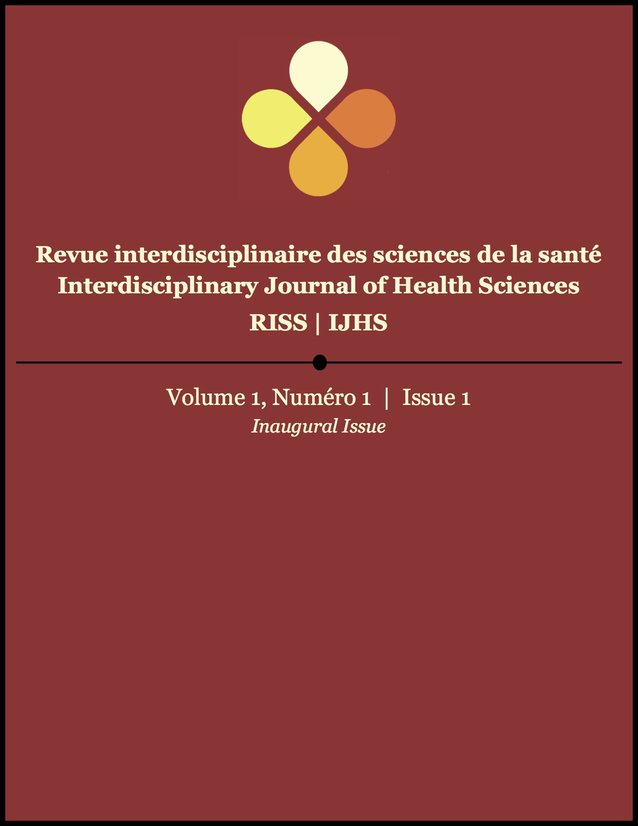Discussion of Bisphenol A as an Environmental Endocrine Disruptor: The Low Dose Effect and Governmental Regulations Concerning its Use and Disposal: A Literature Review
DOI :
https://doi.org/10.18192/riss-ijhs.v1i1.1535Mots-clés :
Endocrine disruption, male infertility, low dose effectRésumé
The disruptive and potentially harmful effects of naturally occurring and man- made endocrine disrupting compounds found in the environment are a topic of considerable debate within government, industry and the general public. Bisphenol A (BPA) is of particular concern due to its incorporation in many consumer products and its potential for leeching. Scientific study continues with attempts to identify and quantify risk associated with this chemical, in order to support industry and regulatory actions. The issue of greatest concern with regards to BPA is the effects of routine exposure to very low concentration of the chemical. The effects of this phenomenon, called Low Dose Effects, raise a great deal of controversy as it is difficult to accurately assess the health outcomes from these exposures. This paper gives a basic understanding of what constitutes Low Dose effects and also examines several studies conducted to determine the health outcomes as a result of exposure to low dose BPA.
Regulatory activities seek to mitigate risk through enactment of legislation to control the use of and exposure to these compounds. As a result the regulatory agencies in Canada and the U.S. have banned the sale of certain consumer products containing BPA and have imposed strict limits on concentration in industrial effluents and waste water drainage. This paper outlines the conditions and limits put in place by both the Canadian and U.S. government regarding the presence of BPA in effluents and consumer products.
Références
Cagen, S. Z., Waechter, J. M.,Jr, Dimond, S. S., Breslin, W. J., Butala, J. H., Jekat, F. W., ...Harris, L. R. (1999b). Normal reproductive organ development in wistar rats exposed to bisphenol A in the drinking water. Regulatory Toxicology and Pharmacology, 30(2 Pt 1), 130-139. doi: 10.1006/rtph.1999.1340
Environment Canada. (2009). Canadian environmental protection act: Environmental registry: Consultation document bisphenol A. Retrieved December 1, 2009, from http://www.ec.gc.ca/ceparegistry/documents/ participation/pba/p5.cfm
Hashimoto, S., Okada, K., & Imaoka, S. (2008). Interaction between bisphenol derivatives and protein disulphide isomerase (PDI) and inhibition of PDI functions: Requirement of chemical structure for binding to PDI. Journal of Biochemistry, 144(3), 335-342 . doi: 10.1093/jb/mvn075
Health Canada. (2003a). Advisory on diethylstilbestrol (DES) and the risk of genital and obstetrical complications. Retrieved December 1, 2009, from http://www.hc-sc.gc.ca/dhp-mps/medeff/advisories-avis/prof/_2003/des_hpc-cps-eng.php
Health Canada. (2003b). Part II canada gazette - food and drug regulations: Project number 1227 (prohibition of certain veterinary drugs). Retrieved December 1, 2009, from http://www.hc-sc.gc.ca/dhp-mps/vet/legislation/acts-lois/cg-gc_part2-eng.php
Téléchargements
Publié-e
Numéro
Rubrique
Licence
- Tous les auteurs dont l’article est publié dans la RISS en conserveront les droits.
- Les auteurs accordent à la RISS le droit d’être la première à publier les articles qui lui sont soumis.
- Tous les articles publiés dans la RISS sont autorisés en vertu d’une licence Creative Commons Attribution à être circulé si les auteurs et la revue de la publication originale sont reconnus.
- La RISS est publiée en ligne et imprimée. La RISS n’est pas responsable de l’utilisation non autorisée du contenu publié sous forme électronique ou imprimée.
- La RISS retient les droits de distribution de tout le contenu.
- Les auteurs, et non la RISS, sont responsables d’avoir obtenu les permissions nécessaires concernant les travaux cités.


